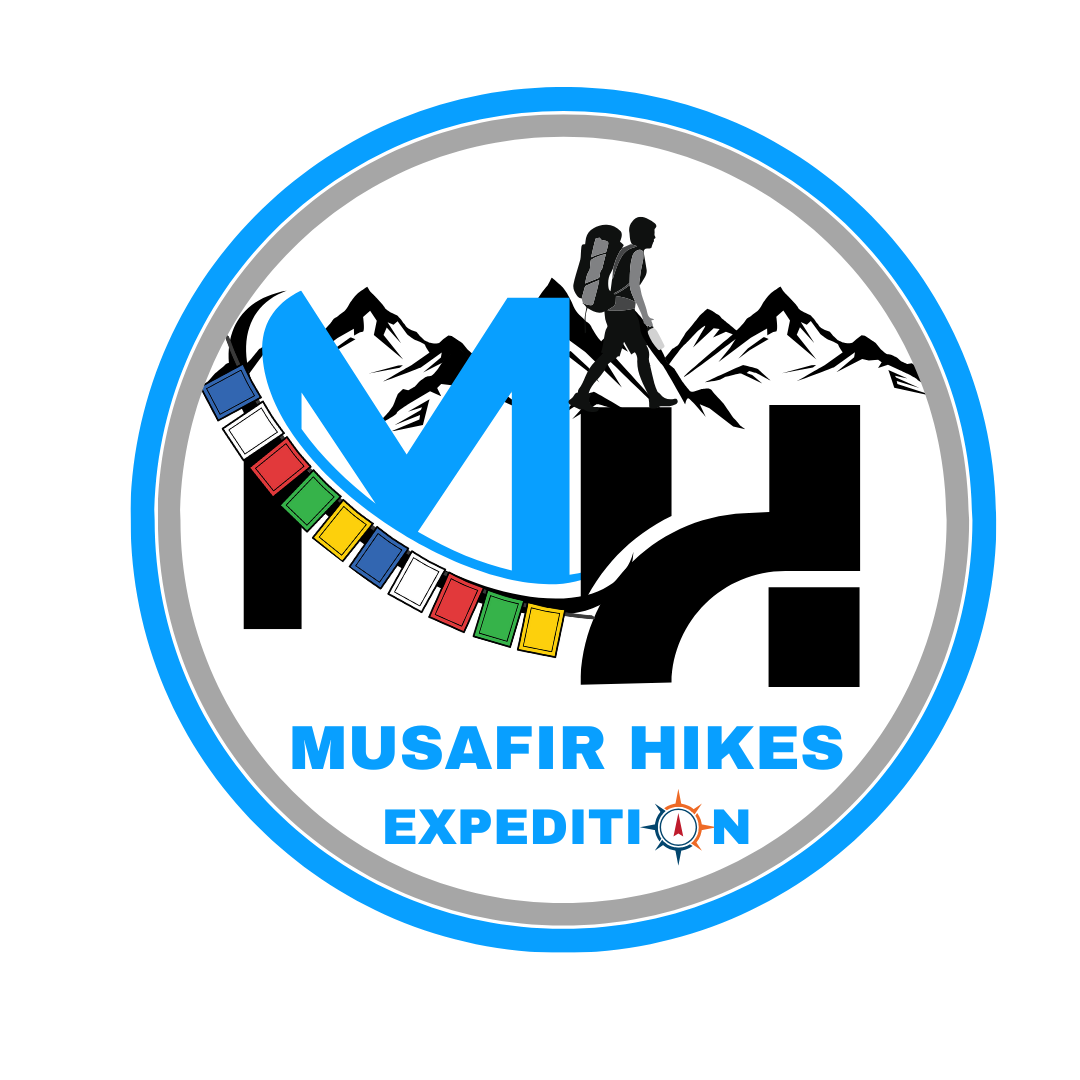Region
Uttrakhand | India
Duration
6 Days
Max. Altitude
14,107 ft.
Trekking Km.
34 Km
Grade
Easy To Moderate
Get in Touch with Our Trek Expert
- 91-9634395113
- info@musafirhikes.com
- Monday - Saturday: 10 AM to 06 PM
Rs. 9,000 / Person
Fixed Departure Dates
Sept 2025
- 5% GST will be applicable on Trek Cost and Add-ons.
- Meeting Point( Pickup/ Drop Point ): ISBT Rishikesh, Railway Station Rishikesh,Tapovan Rishikesh.
- Reporting Time: 6:00 am
- Drop Time: 6:30 pm to 7:30 pm (Timings are subject to change based on weather and road conditions).
- Please reach Rishikesh a day before to avoid any delays.
Overview
Nestled deep within the Nanda Devi Biosphere Reserve, the Valley of Flowers trek is a timeless Himalayan journey — celebrated for its breathtaking beauty and unmatched natural richness. Every monsoon, this mystical valley in Uttarakhand comes alive with an explosion of colors as over 500 species of wildflowers bloom in harmonious profusion—transforming this high-altitude glacial valley into a painter’s dream.
From mid-July to August, the valley transforms into a living canvas of colors, with more than 500 wildflower species in bloom — including rare beauties like the rare and revered Brahma Kamal,the Himalayan Blue Poppy, the Himalayan Blue Poppy, Cobra Lily, Marsh Marigold, and Geraniums. Every step feels like walking through a surreal dream where nature is at its artistic peak. The valley is also home to a delicate yet diverse range of wildlife such as the elusive snow leopard, Asiatic black bear, red fox, musk deer, and the Himalayan monal, which adds an occasional flash of blue and gold to the sky with its flight.
The magnificence of the valley is framed by towering Himalayan peaks that stand guard around it. As you explore deeper, you are treated to panoramic views of Nilgiri Parvat, Hathi Parvat, Gauri Parvat, and Rataban. The distant Tipra Glacier glimmers like a sheet of ice under the sun, offering a humbling reminder of the region’s glacial origins. Mist swirls across the meadows in the early morning and late afternoon, adding a mystical charm to the already dreamlike landscape.
“The Valley was full of flowers; It was impossible to take a step without crushing a flower.”
Continue Reading....
The Valley of Flowers was hidden in the Garhwal Himalayas, undiscovered, unrecorded, and completely unknown to the outside world long before it became a well-known trek for spiritual and adventure seekers. Although local villagers and shepherds were aware of its beauty, it remained largely a sacred secret associated with myths about gods and sages.
The modern world didn’t discover this magical location by accident until 1931.
Frank Smythe, a British botanist and mountaineer, is the first character in the story. He had just returned from a successful expedition to Mount Kamet, one of India’s highest peaks at the time. Smythe and his fellow climbers, exhausted from weeks of intense climbing, descended the rugged terrain with the intention of returning to civilization through the unknown valleys west of the peak. They were completely unaware that destiny had a different path in store for them. A swirling mist engulfed the group as they made their way through alpine meadows and narrow ridges. They were standing in a valley unlike anything they had ever seen, a breathtaking expanse filled with wild, vibrant flowers stretching as far as the eye could see, as if the cloud cover had suddenly fallen. The team could not name hundreds of species as they danced in the mountain breeze, including orchids, poppies, primulas, and others.The entire landscape shimmered with a glow that was almost surreal, and the soft post-monsoon light made the sky above glow.
Frank Smythe later wrote in his journal: They were so enchanted by this discovery
“The Valley was full of flowers; it was impossible to take a step without crushing a flower.”
The Valley of Flowers would appear on the world map at this point. Smythe continued to be mesmerized by what he had seen when he returned to England. His travelogue, “The Valley of Flowers,” was published in 1937. It piqued the interest of botanists, hikers, and nature enthusiasts all over the world.
While the Valley of Flowers is a celebration of nature’s wild beauty, Hemkund Sahib is a place where spiritual serenity and Himalayan grandeur come together. These two destinations—though very different in essence—share the same trail, the same base camp, and the same sacred silence that descends as you rise higher into the mountains. Together, they form a complete journey that nourishes both the soul and the senses.
Hemkund Sahib is one of the world’s highest gurudwaras, rising 14,100 feet in elevation. It sits beside a glacial lake, surrounded by seven snow-clad peaks, and is deeply revered in the Sikh faith. According to the Sikh holy scripture, it is believed that Guru Gobind Singh Ji, the tenth Sikh Guru, meditated here in his previous life. Pilgrims from all over the world undertake this difficult yet devotional journey during the summer months, braving steep ascents, thin air, and unpredictable weather to pay their respects.
Who Can Participate
- Age Requirements:
- April to November: 9 years.
- December to March: 11 years.
- First-timers are welcome, though prior trekking experience is preferred. Good fitness is a must.
- Fitness Criteria:
- The Trekker should have sufficient stamina to cover 5 km of distance by jogging in 35 minutes without stress or 10 km of distance in 80 minutes without stress
- If the trekker prefers cycling he/ she should be able to cycle 10 km of distance in 30 minutes .
- If the trekker wants to carry a backpack then he/she should be able to carry a 10-12 kg backpack. If opt Off-load option then the trekker should be able to carry a 3-5 kg backpack.
- If a trekker’s BMI is more or less than the normal range (18-29), please consult our Trek Coordinator before booking.
Valley Of Flowers-Hemkund Sahib Trek Itinerary
Day-1: Rishikesh to Joshimath
- Altitude Joshimath: 1,920 meters / 6,150 ft.
- Drive Distance: 290 Km Drive | 10-11 Hours
Day-2: Joshimath to Ghangaria
- Drive:- 19 km
Govindghat to Pulna
- Drive :- 4 km
Pulna to Ghangaria
- Trek :- 9 km
- Altitude:-3,050 meters/10,200 ft.
Day-3: Ghangaria to Valley of flowers & Back
- Trek :- 14–16 km round trip
- Altitude: Valley sits between 3,500–3,700 meters.
Day-4: Ghangaria to Hemkund sahib and back
- Trek :- 12 km round trip
- Altitude: 4,300 m
Day-5: Ghangaria to Joshimath
- Trek :- 10 km
- Drive: 4 km
Day-3: Joshimath to dehradun
- Drive: 270–290 km
- Time: 9–11 hours
Note:
- Keep a buffer day in your travel plan.
- If buffer day is not used in the travel then it can be used to Explore Rishikesh.
- Read the article Things to do in Rishikesh.
- Distance, Altitude, and Trekking hours are approximate and rounded off.
- Keep the original and copy of ID proof handy.
- Come one day early if planning to come by plane.
Rishikesh to Joshimath
Drive Distance: 290 km Drive Time: 10–11 hours
Altitude Gain: 372 m to 1,920 m
Your journey begins at dawn, as you leave the rhythmic flow of the Ganga behind in Rishikesh. As the sun rises, you settle into your seat for a full-day mountain drive. The winding road hugs riverbanks, cuts through pine forests, and snakes past the confluences of Devprayag, Rudraprayag, and Karnaprayag, where sacred rivers meet in turquoise and jade hues.
You’ll stop for tea at roadside stalls with unbelievable views, cross ancient suspension bridges, and feel the altitude gently rise as you move deeper into the Garhwal Himalayas. By evening, you reach Joshimath, a spiritual town nestled under towering cliffs, where the mountain air feels cooler and cleaner. Check in, rest, and enjoy a warm meal under a star-drenched sky.
Joshimath to Ghangaria
Drive Distance: 19 km (Joshimath to Govindghat) + 4 km (Govindghat to Pulna)
Trek Distance: 9 km Trek Time: 4–6 hours
Difficulty Level: Moderate (well-defined path, gradual ascent)
Altitude: ~1,900 m to 3,050 m
After an early breakfast, you take a short drive to Govindghat, where the Lakshman Ganga roars past a cluster of shops and shrines. From here, a narrow drive leads to Pulna, the last motorable village. This is where your real adventure begins.
The 9 km trail to Ghangaria winds through rhododendron groves, beside waterfalls tumbling down cliffs, and across wooden bridges. The river stays close by, singing alongside your steps. You’ll pass pilgrims heading to Hemkund and fellow trekkers sharing smiles and stories.
By afternoon, you reach Ghangaria—a tiny alpine settlement surrounded by tall forests and echoing with the sound of nature. You’ll feel your body tired but your spirit excited. Hot dinner, warm beds, and fresh mountain air await you.
Valley of Flowers Exploration
Trek Distance: 14–16 km round trip Trek Time: 6–7 hours
Altitude: 3,500 to 3,700 m
Difficulty Level: Moderate (gentle incline, scenic trail)
Today’s trek is a walk through one of the world’s most beautiful meadows. After crossing a forest check-post, the trail climbs gradually, unveiling the Valley of Flowers National Park, a UNESCO World Heritage Site. The path opens into a vast, glacial valley bursting with colors. During monsoon, over 500 species of wildflowers bloom here—Brahma Kamal, Blue Poppy, Cobra Lily, Himalayan Bellflower, and many more, painting the landscape with every imaginable hue.
Snow-clad peaks like Rataban, Gauri Parvat, and Nilgiri Parvat stand tall in the distance, watching over the valley like ancient guardians. You’ll see alpine streams cutting through carpets of flowers, butterflies fluttering in the sunlight, and if you’re lucky, spot rare fauna like musk deer or Himalayan monals.
Spend time soaking in the quiet majesty of the valley before heading back to Ghangaria for the night.
Hemkund Sahib Trek
Trek Distance: 12 km round trip Trek Time: 6–7 hours
Difficulty Level: Difficult (steep climb, high altitude)
Altitude: 4,300 m
The trail to Hemkund Sahib is a steep, stone-paved path that gains almost 1,300 m in just 6 km. This climb is challenging but extremely rewarding. The air gets thinner, the views more surreal, and the sense of silence more profound.
Upon reaching the top, you are greeted by Hemkund Lake, still and reflective, cradled by seven snow-covered peaks. The Gurudwara Hemkund Sahib stands with dignity beside the lake, radiating calm. Pilgrims take a dip in the icy waters, considered purifying, before entering the shrine. Just a few steps away is the Lakshman Temple, a beautiful stone structure steeped in mythology.
After spending some time absorbing the spiritual energy and the jaw-dropping scenery, you descend back to Ghangaria. This is often the most memorable day of the trek.
Ghangaria to Joshimath via Govindghat
Trek: 9 km to Pulna
Drive: 4 km to Govindghat + 19 km to Joshimath
You begin your return with the same 9 km descent to Pulna. The downhill trek gives you one last chance to enjoy the sounds of birds, distant waterfalls, and the forest scent in the mountain air. From Pulna, a short drive takes you back to Govindghat and onward to Joshimath.
Reaching Joshimath feels like returning to familiarity, and the comforts of hot food and warm beds. You’ll have the evening to rest, reflect, or explore the sacred town once again.
Joshimath to Dehradun via Rishikesh
Distance: ~270–290 km Travel Time: 9–11 hours
On the final day, begin your drive back through the same scenic mountain highway. This long but beautiful journey takes you through the five confluences of the Alaknanda again—Vishnuprayag, Nandprayag, Karnaprayag, Rudraprayag, and Devprayag. With lush hills, deep valleys, and river vistas, it’s a visual farewell from the Garhwal Himalayas.
You arrive in Dehradun by evening, with a heart full of stories, photographs, and memories that will stay etched forever.
Note: Read more about our Customize Tours Plan before booking your tour.
The Valley of Flowers Trek, along with the sacred climb to Hemkund Sahib, is open to trekkers from mid-June to the end of September. This limited window of just over three months captures the Himalayas in one of their most dramatic and beautiful transformations.
Here’s what you can expect during each phase of the trekking season:
Mid-June to Early July: The Reawakening of the Valley
As the snow begins to melt and the trails reopen, the valley starts coming alive. You’ll witness the earliest bloomers—Globe flowers, Marsh marigolds, Bistorts, and Himalayan Anemones. The streams are full from the melting snow, and waterfalls cascade down freshly thawed cliffs. This period also sees relatively fewer trekkers, so if you enjoy solitude and the raw power of nature, this is a magical time to visit.
- Highlights: Snow patches, flowing glaciers, early blooms, fewer crowds.
- Best for: Photographers and nature lovers who want to witness the valley’s awakening.
Mid-July to Mid-August: Peak Bloom and Maximum Beauty
This is the prime blooming season in the Valley of Flowers. The entire landscape explodes into a carpet of vibrant colour—Blue poppies, Cobra lilies, Himalayan Bellflowers, Dactylorhiza, Geraniums, and Brahma Kamal (especially near Hemkund Sahib) dominate the scenery. The biodiversity is at its peak, and every turn of the trail reveals new blossoms.
- Highlights: Full floral bloom, lush green meadows, most active ecosystem.
- Best for: Trekking enthusiasts who want to see the valley at its visual best.
Mid-August to End of September: Misty Trails and Alpine Charm
As monsoon starts to fade, the flowers slowly begin to recede, but what emerges is a more peaceful and mystical landscape. The valley is shrouded in mist during early mornings and evenings. The trails are clearer, and the weather is relatively stable. While the floral density reduces, the crisp air, golden grasses, and post-monsoon clarity make this time deeply rewarding.
- Highlights: Autumn hues, clearer skies, quieter trails, ideal for Hemkund Sahib climb.
- Best for: Those who seek tranquility and clearer photography conditions.
Bonus Insight: Best Time for Hemkund Sahib
The best time to visit Hemkund Sahib is from mid-July to early September, when the weather is stable, and Brahma Kamal blossoms around the glacial lake. This sacred site sits at 4,300 meters and is accessible only during this narrow window due to snowbound paths.
Valley Of Flowers-Hemkund Sahib Trek Graph
Health & Awareness
All participants must undergo a mandatory health check-up before the trek, as per Indian Mountaineering Foundation (IMF) safety norms.
Trekkers with chronic medical conditions (e.g., asthma, heart disease, epilepsy, diabetes, high blood pressure) must declare them during registration and carry prescribed medicines.
Basic first aid, oxygen cylinders, and a certified trek leader trained in Wilderness First Aid (WFA) will be present on all expeditions.
Trekkers must be aware of Altitude Mountain Sickness (AMS), its symptoms, and precautions. Guidelines will be explained during the briefing session.
Government Employees
As per Indian Government rules, employees availing leave for adventure activities must ensure proper leave sanction orders from their department before joining the trek.
Employees seeking reimbursement or recognition for adventure training must ensure the trek is recognized by the Indian Mountaineering Foundation (IMF) or Ministry of Youth Affairs & Sports.
A participation certificate will be provided after the trek, which can be submitted to concerned government departments for official use.
It is the participant’s responsibility to comply with their organization’s travel, safety, and insurance policies before joining.
Kids Guidelines
Children below 10 years are generally not recommended for high-altitude treks as per IMF advisory.
For family-friendly treks, children aged 10–15 years must be accompanied by a parent/guardian and require a fitness clearance certificate from a registered doctor.
Kids must be mentally prepared for long walks, uneven terrain, and basic camping conditions, as per outdoor safety norms.
Parents/guardians are solely responsible for their child’s safety, behavior, and adherence to trek rules.
Fitness Required
All trekkers must meet basic fitness standards set under Indian Mountaineering Foundation (IMF) and Ministry of Tourism guidelines.
Minimum fitness requirements:
Ability to walk 5 km in 45 minutes on plain terrain.
Ability to carry a 6–8 kg backpack for multiple hours.
No recent major surgeries or serious medical conditions in the past 6 months.
A medical fitness certificate (from an MBBS/MD doctor) is mandatory before joining high-altitude treks.
Alcohol, smoking, and drug use are strictly prohibited during the trek as per IMF and local administrative regulations.
What To Pack
Shoes and backpack
- Trekking shoes with ankle support
- Backpack with rain cover
Warm Layers and Clothes
- Warm layers – 3 layers if you’re trekking in spring, summer and monsoon (1 woollen sweater, 1 fleece, 1 padded jacket) – 4 layers if you’re trekking in autumn (1 woollen sweater, 2 fleece, 1 padded jacket) – 5 layers if you’re trekking in winter (1 pair of thermals, 1 woollen sweater, 2 fleece, 1 padded jacket)
- 3 Collared T-shirts (Wear one, carry two)
- 2 quick-dry trek pants (Wear one, carry one)
Continue Reading..
Accessories
- Sunglasses
- Sun cap
- Waterproof gloves
- Balaclava
- Woollen socks (2 pairs of Dry fit + 1 pair of Woollen)
- Headlamp
- Trekking pole
- Rain jacket + pants / poncho
Toiletries:
- Sunscreen
- Moisturiser
- Light towel
- Lip balm or vaseline
- Toilet paper
- Toothbrush
- Toothpaste
- Reusable plastic covers (for used clothes)
Cutlery:
- Steel lunch box, spoon and a Two water bottles or Hydration Pack
Basic Medical Kit (Carried by You)
While Musafir Hikes carries a larger medical kit, we recommend bringing personal medicines:
- Diamox (for AMS) – only after doctor consultation
- Paracetamol, Combiflam
- Avomine (for motion sickness)
- ORS or Electrolyte Sachets
- Band-aids, Antiseptic Cream
- Muscle Spray or Pain Relief Balm
- Any prescribed medication
Documents & Personal Items
- Government ID (Aadhar/Passport) – Mandatory for forest permits
- Photocopies of ID – At least 2
- Passport-size Photos – 2–4 (for permits)
- Cash – ATMs may not work beyond Joshimath; keep ₹2,000–₹3,000 for local expenses
- Small Notepad + Pen – For journaling or information
Pro Tips
- Pack light but don’t skip essentials. Every extra kilo will feel heavier at 3,500 m.
- Avoid plastic bags. Use dry bags or zip-locks to keep items dry and organized.
Check weather forecasts a day before your trip and adjust accordingly.
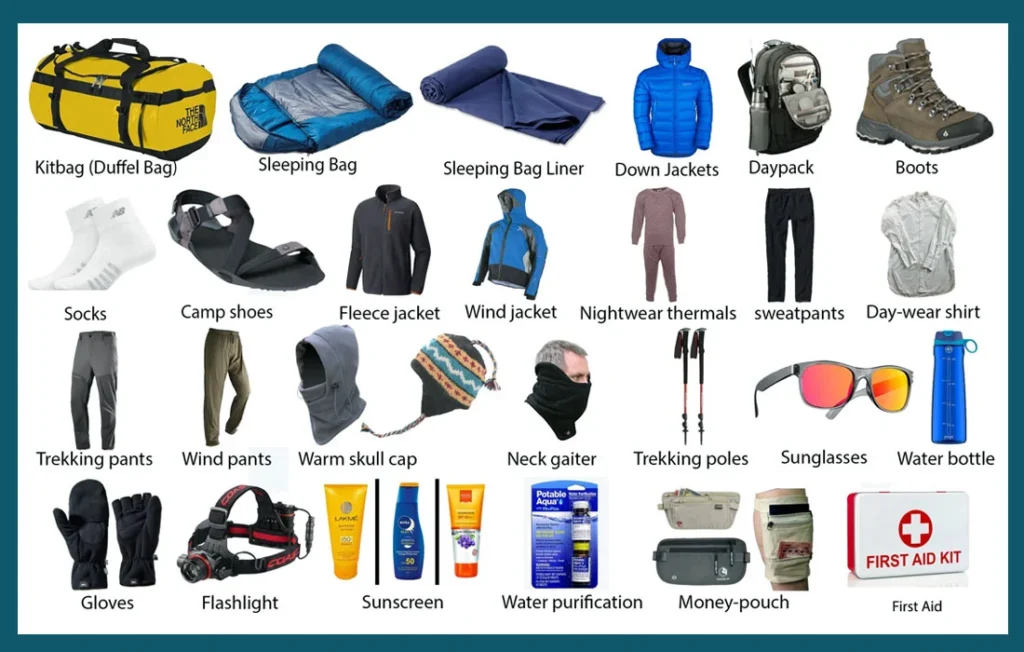
How To Reach
Pick-Up Information
- It is essential for everyone to arrive at Rishikesh (06:00 am)
- Pick-up Location – ISBT Rishikesh,Railway Station Rishikesh,Tapovan Rishikesh.
- Once you have reached Rishikesh, MHE will manage the rest of your travel arrangements, if you have opted for pick-up service, you can select this option during the booking process by adding it as an add-on.
Options to Reach Rishikesh
First, you can arrive at Delhi, Dehradun airport or Chandigarh. The journey from these locations to Rishikesh is explained below.
1. Take overnight train/bus to Rishikesh.
2. Take overnight train/bus to Haridwar and drive to Rishikesh (25km | 35 min drive with normal traffic).
3. Take overnight train/bus to Dehradun and drive to Rishikesh (50km | 1hr 20min drive with normal traffic).
4. Board a flight to Dehradun airport (Jolly Grant Airport) (21 km, 30 min) from Rishikesh. If you’re arriving by air, then come one day in advance.
Drop-Off Information
- The designated drop-off point is same as pickup point.
- Reach in Rishikesh by 6:30 to 7:30 pm.
- Please consider planning your subsequent travel arrangements after 10:00 pm.
Note – In July and August month always have a buffer day in your Itinerary due to the Monsoon.
- It’s highly advisable to keep a buffer day in your travel plan. If the buffer day is not used, it can be used to explore Rishikesh.
- MHE offers comfortable transportation through Tempo Traveler, Bolero, or equivalent vehicles. If you wish to upgrade your mode of transportation, please contact your trek coordinator for further assistance.
Cost Terms
✅Inclusion
Accommodation (as per the itinerary):
- Triple/quad sharing (separate for males and females throughout the trek)
Meals (Veg + Egg):
- All meals (including tea, soup, snacks, etc.) from Day 1 Dinner to Day 6 Breakfast. Morning and evening tea, accompanied by light snacks, are included in the Valley of Flowers trekking package.
3. Support:
- 1 Versatile base camp manager handles communication and deploys extra manpower in emergencies.
- 1 Mountaineering & First aid qualified professional trek Leader.
- 1 Experienced high-altitude chef.
- Local experienced guides (Number of guides depending on the group size).
- Enough support staff.
Trek equipment:
- Sleeping bag, Sleeping liners (if required), mattresses, and Utensils.
- 3 men all season trekker tent (twin sharing), Kitchen & Dining tent, Toilet tent.
- Camping stool, Walkie talkie.
- Ropes, Helmet, Ice axe, Harness, Gaiters & crampons (if required).
5. First aid:
- Medical kit,Stretcher,Oxygen cylinder,Blood pressure monitor,Oximeter,Stethoscope.
6. Transportation (as per the itinerary). Mules/porters to carry the central luggage.
- Cloakroom facility available at the base camp for additional luggage
- All necessary permits and entry fees, Upto the amount charged for Indian
- Trek Completion Certificate.
❌Exclusion
- Insurance (Mandatory).
- Food during the transit.
- Any kind of personal expenses.
- Mule or porter to carry personal luggage.
- Emergency evacuation, hospitalization charge, etc.
- Anything not specifically mentioned under the head Inclusion.
Things can be provided on demand and availability (participant has to pay extra for these things).
- Satellite phone/set phone – is a type of mobile phone that connects via radio links via satellites orbiting the Earth instead of terrestrial cell sites like cellphones. Therefore, they can operate in most geographic locations on the Earth’s surface.
- Gamow/PAC HAPO Bag(Portable Hyperbaric Bag) – is a unique, portable hyperbaric chamber for the treatment of acute mountain sickness (AMS), also known as altitude sickness.
- AEDs (Automated External Defibrillators) are portable life-saving devices designed to treat people experiencing sudden cardiac arrest, a medical condition in which the heart stops beating suddenly and unexpectedly.
Cancellation & Rescheduling Policy
We understand that plans can change. Our policies are simple, transparent, and designed to balance your flexibility with the commitments we make to our local teams.
❌ Cancellation Policy
- Cancellation requests must be made in writing via email (info@musafirhikes.com)
- The date of cancellation is the date we receive your request, not when it is sent.
Refunds
- 30+ days before trek → Full refund (minus 1.99% processing fee)
- 15–29 days before trek → 80% refund
- 10–14 days before trek → 60% refund
- 5–9 days before trek → 40% refund
- ≤4 days before trek → No refund
Rescheduling Policy
- Requests must also be made in writing (e.g., via email).
- The date of receipt determines rescheduling eligibility.
Rescheduling Fees
- 30+ days before trek → Free reschedule
- 15–29 days before trek → 10% fee
- 10–14 days before trek → 20% fee
- 5–9 days before trek → 30% fee
- ≤4 days before trek → Not possible
Notes
- Refunds are processed within 7–10 business days to the original payment method.
- Timelines are counted from the original trek start date.
- If a trek is affected by weather, natural events, or government restrictions, we will try to reschedule first. If not possible, the cancellation terms above apply.
- Bookings are non-transferable.
- Once rescheduled, treks become non-refundable.
Trek Essentials
Gallery
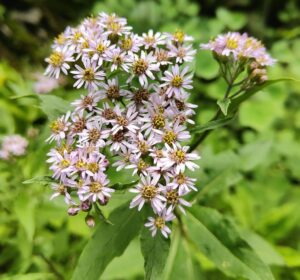
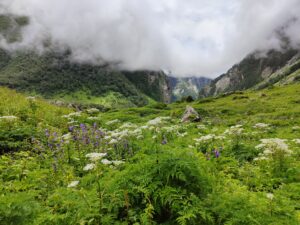
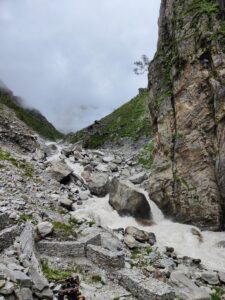
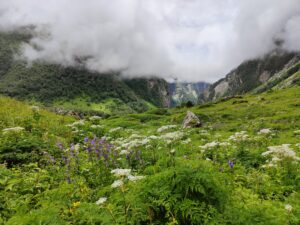
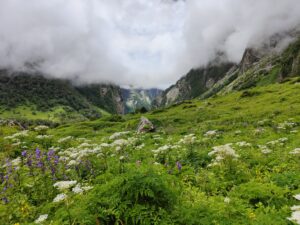
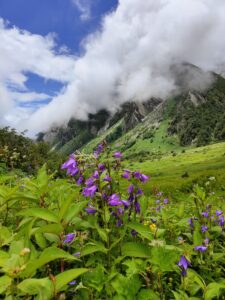
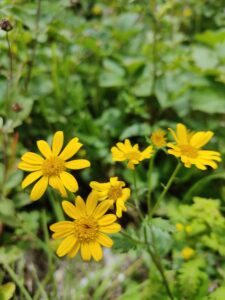
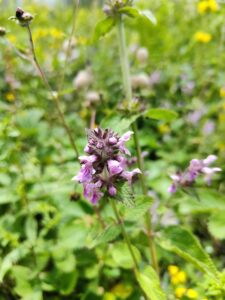
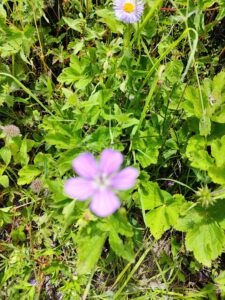
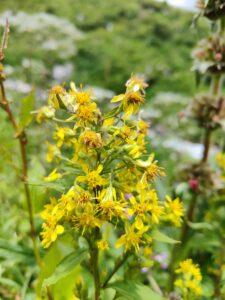
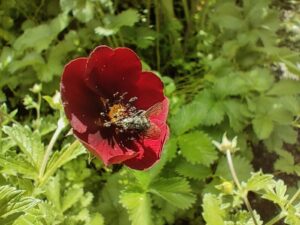
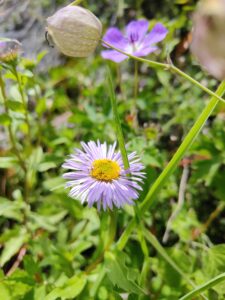
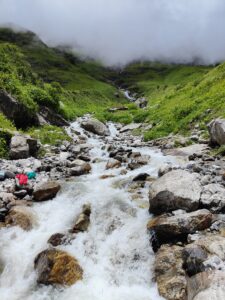
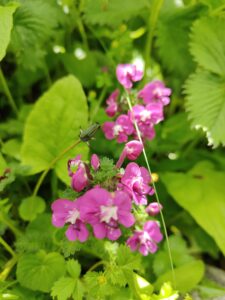
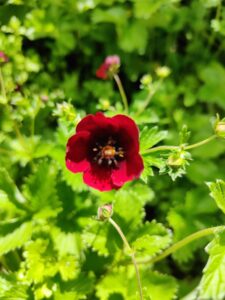
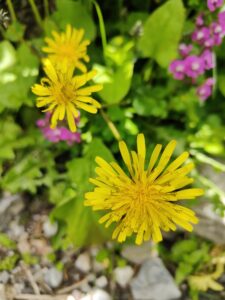
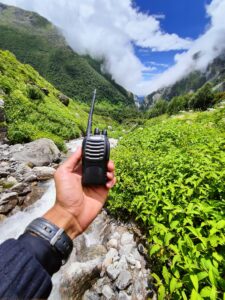
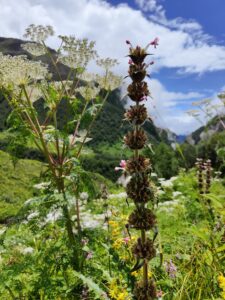
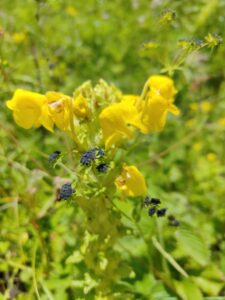
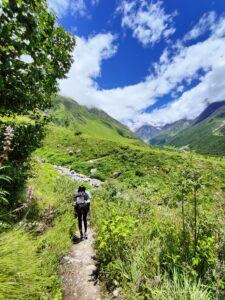
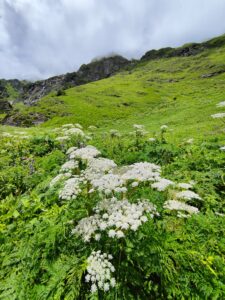
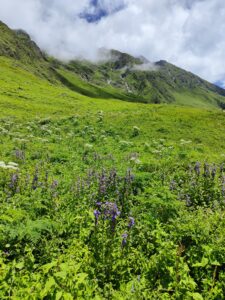
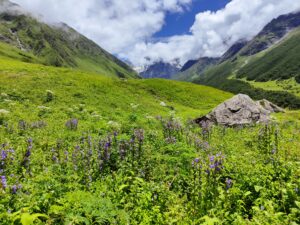
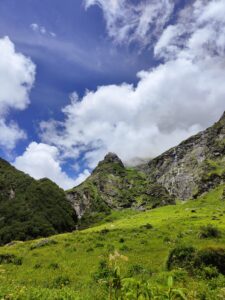
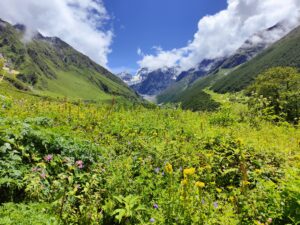
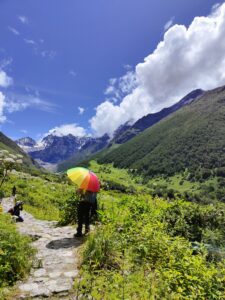
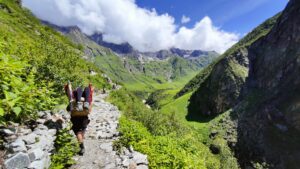
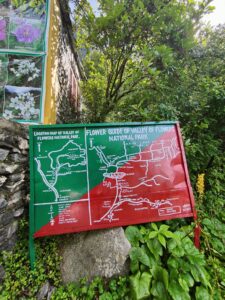
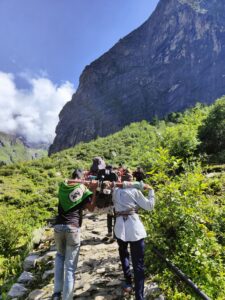
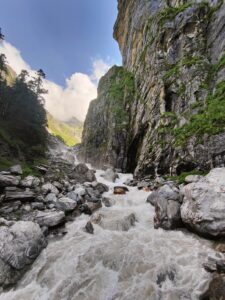
Trek Reviews




Frequently Asked Questions(FAQ)
Can children or senior citizens do this trek?
Yes, if they are physically active and medically fit. We’ve seen trekkers from ages 10 to 65 complete it successfully. Children must be supervised, and seniors should consult a doctor for clearance. It’s also important they begin fitness preparation at least a month in advance.
Do I need any permits for the trek?
Yes, forest entry permits for the Valley of Flowers National Park, and a separate pass for Hemkund Sahib trail, are required. These are arranged by Musafir Hikes as part of your trek package. You only need to bring a government ID and passport-size photos.
Is there a place to leave luggage I don’t need during the trek?
Yes. You can leave extra bags or items at our Joshimath base lodge, safely stored until your return. Just pack a smaller bag with essentials for Ghangaria and trail days.
Is Hemkund Sahib trek compulsory? Can I skip it?
No, it’s not compulsory. While we encourage trekkers to do it for the spiritual and scenic experience, Hemkund Sahib is optional. If you’re tired or feeling unwell, you can rest in Ghangaria while others make the trip.
What if it rains every day? Will the trek still happen?
Yes, the trek runs through the monsoon, which is why the valley blooms. Rain is expected. Our treks are designed around the season. Carrying proper rain gear like a poncho or rain jacket and backpack cover is mandatory. Trails remain open unless there’s a severe landslide or weather advisory.
How cold does it get? Will I need heavy winter clothing?
In Ghangaria, temperatures can drop to 4–6°C at night, and at Hemkund Sahib, it may feel even colder due to wind chill. During the day, it’s pleasant but can change quickly due to rain. Layered clothing is best — thermal innerwear, fleece, padded jacket, gloves, and a rain jacket are essential.
Will I be able to complete this trek if I’ve never trekked before?
Yes, you can. The Valley of Flowers trek is beginner-friendly in terms of terrain but does involve walking long distances and a steep climb to Hemkund Sahib. If you are reasonably fit, can walk for 6–7 hours in a day, and do some basic preparation like walking/jogging daily for 2–3 weeks, you’ll be fine. The trail is well-defined, and our guides will support you throughout.
How do I reach the starting point of the trek?
The trek starts from Joshimath, which is well connected by road from Rishikesh, Haridwar, and Dehradun. Musafir Hikes provides shared transportation from Rishikesh as part of the itinerary.
Where is the last ATM point, and what about network connectivity?
- Last ATM: Joshimath.
- Network: BSNL and Jio work in some stretches.
What kind of accommodation can I expect?
During the trek, trekkers stay in guesthouses/lodges at Joshimath and Ghangaria. Rooms are clean, basic, and comfortable with attached or shared bathrooms depending on availability.
How do I book a tour with Musafir Hikes?
You can book directly through our website or contact us via call/WhatsApp/email. Once you select your tour, you’ll receive a confirmation and payment details.
What is included in the tour cost?
Our tours generally include accommodation, meals (as per itinerary), guide charges, permits, and basic medical support. Exclusions usually cover personal expenses, travel insurance, and anything not mentioned in inclusions.
Is it safe to travel with Musafir Hikes?
Yes. Your safety is our top priority. We follow government trekking norms, carry first aid, and our guides are trained in mountain safety and emergency handling.
How difficult is the trek/tour? Do I need prior experience?
Difficulty varies from tour to tour. Most treks are designed for beginners with good fitness, while some require prior high-altitude experience. Fitness preparation tips are always shared after booking.
How do I prepare physically for the trek?
We recommend regular walking/jogging, stair climbing, or light cardio at least 3–4 weeks before the trek. Staying hydrated and building stamina will make your experience much easier and enjoyable.
How do I reach the starting point of the trek?
We provide details of the nearest railway station/airport and assist with travel planning. Transport from pickup points (like Rishikesh/Dehradun) is usually arranged with the group
Why should I choose Musafir Hikes?
We focus on safety, sustainability, and local community support. A part of your booking helps uplift Himalayan villages, making your journey meaningful.
